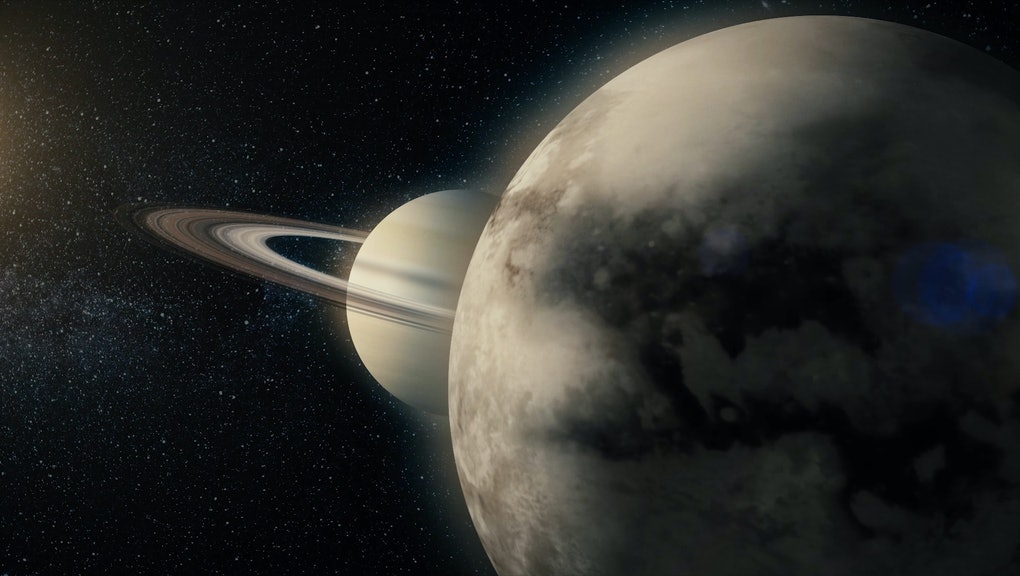NASA’s Cassini spacecraft located volcano-like features in polar regions on Saturn’s moon Titan. It could be the evidence of explosive eruptions that may continue today, according to a new paper by senior scientists Charles A. Wood and co-author Jani Radebaugh of Planetary Science Institute of Brigham Young University.
According to “Morphologic Evidence for Volcanic Craters near Titan’s north polar region” that appears in the journal of Geophysical Research: Planets, morphological features such as nested collapses, elevated ramparts, halos, and islands indicate that some of the small depressions in the north polar region of Titan are volcanic collapse craters. A few similar depressions occur near the south pole of Titan as well.
NASA’s Cassini mission has revealed many landforms on Saturn that are similar to Earth – sand dunes, river valleys, and lakes. These have been formed by actions of solar heating and atmospheric actions on the surface.
Mr. Wood said, “The close association of the proposed volcanic craters with the polar lake is consistent with a volcanic origin through explosive eruptions followed by collapse, as either mars or calderas. The apparent freshness of some craters may mean that volcanism has been relatively active on Titan or even continues today.”
He further added that “We can see there is also internal heat, manifest at the surface as cryovolcanoes, made from melting the water ice crust into liquid water that erupts onto Titan’s surface. These features are roughly round, with raised rims, and they sometimes overlap each other. They are consistent with the shapes of other volcanic landforms on Earth and Mars formed by the explosion, excavation, and collapse.”
Wood’s research was sponsored by a grant to PSI from NASA’s Cassini mission.

